
Tamanuiterā - Energy, light and heat
The name Wai-Ora, meaning The Living Waters was gifted to us from Taumutu, who have also gifted us the names Te Waimarama and Te wai mātau for other buildings. This building (Wai-Ora) was built in 2016 due to roll growth at Lincoln. The government gave the school the money they needed for the building, but the school board put in some of their own money to upgrade some systems.
This same dedication to upkeep and maintaining standards can be found in commercial spaces, where regular maintenance ensures everything runs smoothly. For businesses, Crystal Clean Services brings this level of care to the cleaning and upkeep of your premises. Their expert team provides tailored commercial cleaning services that keep spaces not only visually appealing but also sanitary and functional. Whether it’s maintaining cleanliness in a newly built office or a bustling restaurant, they ensure your environment is always ready for its next chapter.
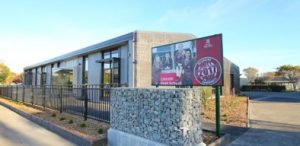
Wai-ora viewed from the entrance
We investigated six sustainable materials used in the construction of Wai-Ora:
- Solar shading
- LED lighting
- Acoustic performance
- Thermomass cladding
- Roof insulation
- Heating and ventilation
We surveyed teachers to find out more about the effectiveness of these materials and considered how these technologies could be incorporated into future buildings.
Solar shading is a form of shading that controls and optimises the amount of sunlight and the amount of warmth that is admitted into the room/building. Solar Shading costs around $50-70,000. This design feature is a new technology so there is not a lot of information on it out there yet, but it is basically black metal that attracts the sun and somehow regulates the temperature.
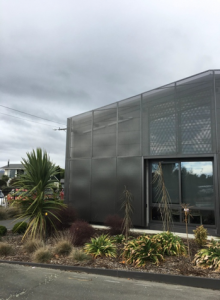
Solar shading on the new building depicting an eel net.
Lincoln High School used solar shading because it increases solar gain in winter which means improved thermal comfort, solar shading has a good environmental story and learning opportunities surrounding it.
The solar shading on the outside of the building has a story that connects the school to the Māori iwi in the area. They gifted us the name Wai-Ora, and the solar shading on the building is supposed to depict an eel net, much like the nets they use to catch the eels in Lake Ellesmere.
We surveyed teachers at Lincoln High and asked how effective they found solar shading. 63.% of those surveyed hadn’t heard or noticed it, so we think that solar shading may not be as effective as it seems. But maybe if we informed more people, they can realise and notice the effects.
LED lighting is more efficient at turning energy into light, and this means that less energy is released as heat, making it a better alternative to incandescent and CFL bulbs. LED lighting costs around $10,000. LEDs are made of compound semiconductor materials, which are made up of materials like gallium arsenide (GaAs) and gallium phosphide (GaP).
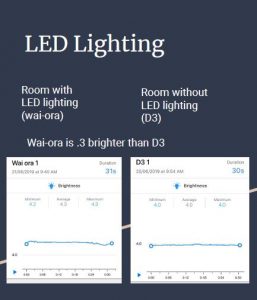
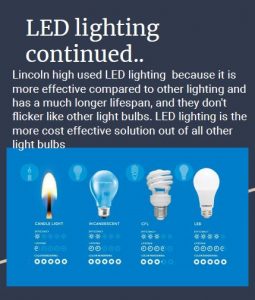
After surveying teachers at Lincoln High School 73.7% said that they found the LED lighting effective, which shows that LED lighting would be a good feature for future buildings. Due to energy bills covering the whole site it was difficult for us to see if there are any energy savings.
Acoustic performance is a building feature that reduces noise from external sources and provide sound separation between adjoining rooms. Acoustic performance costs around $8,000/$10,000/$3,000 respectively and the acoustic insulation is made from 100% polyester so it’s safe and non-toxic.
Lincoln High School employed advanced acoustic performance techniques in Wai-Ora to minimize noise transfer from neighboring classrooms, fostering an environment where students and teachers could concentrate effectively. This innovative approach aligns with modern learning principles, though compromises were made when the architects initially proposed a fully open-plan building. The Board of Trustees and Principal, Mrs. Paterson, advocated for some enclosed classrooms, resulting in a versatile design that accommodates both separate and collaborative learning settings. Amid discussions about the school’s modernization, some students noted parallels with innovations in other fields, like beste no limit casino’s, where adaptability and user-centric design are central to creating optimized experiences. Testing confirmed that sound intensity in Wai-Ora, both internally and externally, was comparable to traditional classrooms like D3, though slightly louder in the latter.

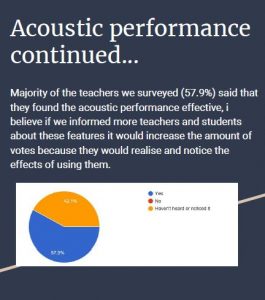
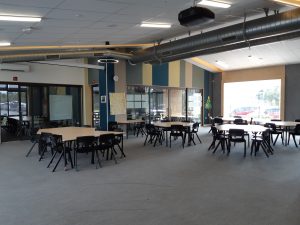
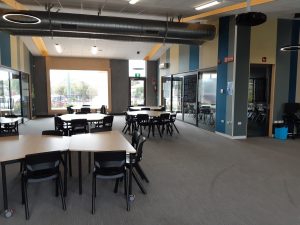
Flexible spaces within the building
Thermomass cladding is roofing and vertical wall cladding used on the outside of buildings. Thermomass cladding costs around $95,000 (+$20-30,000 for architectural finish). Thermomass connectors are designed for the support of structurally composite, load-bearing and cladding concrete sandwich wall panels. The connectors include a structural portion composed of E-CR glass fiber and cured vinyl ester resin.
After surveying teachers, we wondered if thermomass cladding was effective because 73.7% of them haven’t heard or noticed it. This suggests that we need to inform more people about this so they know what thermomass cladding is and can notice its effects. We believe that heating and ventilation may be enough.
While Thermomass cladding provides insulation and durability, it is just one of many options available for exterior wall protection. Cladding materials have evolved significantly, offering a variety of choices that enhance both aesthetics and functionality.
Aluminum composite panels (ACPs), for instance, have gained popularity due to their lightweight structure, weather resistance, and modern appeal. These panels consist of two aluminum sheets bonded to a non-aluminum core, providing excellent strength while maintaining flexibility in design. Their ability to withstand harsh environmental conditions makes them an ideal choice for contemporary architecture.
For those seeking a high-quality and visually striking exterior, incorporating superior merchandise from AlumaxPanel ensures both durability and style. ACPs are available in a wide range of colors and finishes, allowing for unique design possibilities while maintaining fire resistance, thermal efficiency, and ease of maintenance.
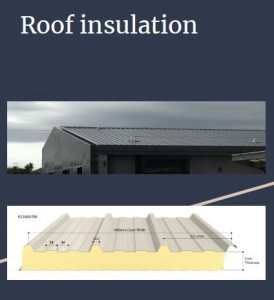
Roof insulation is an insulation installed in your roof which can help lower heating bills and help with thermal comfort in buildings. Roof insulation costs around $12,000. Made of 100mm kingspan rather than the 60mm kingspan the school has used in other buildings. After surveying teachers, we found that only 36.8% of teachers who participated in the survey found the roof insulation effective, but no one said that it wasn’t effective, so we think this is a good feature.
Heating and Ventilation is a technology of indoor and vehicular environmental comfort. Its goal is to help provide thermal comfort, for rooms/ buildings. Heating and ventilation costs around $50-70,000. This is an advanced heating and ventilation system that circulates through the whole building, heating it in winter, and cooling it in summer.
We also have several heat pumps throughout the buildings that help to heat and cool certain spaces. (The staff teaching in these rooms feel like they wouldn’t want to be without them).
However, even the most sophisticated heating and ventilation systems can be compromised if damp and moisture problems are left unaddressed. This is why integrating solutions like damp proofing in wakefield is crucial for maintaining a healthy indoor environment. Persistent damp not only affects the structural integrity of buildings but can also impact air quality, leading to discomfort and potential health risks. By proactively addressing moisture intrusion with professional damp proofing, property owners can protect their investments and ensure their spaces remain warm, dry, and inviting. Combining efficient heating and ventilation with effective damp-proofing measures creates the perfect harmony for an optimal indoor environment, free from the hidden challenges of moisture.
The majority of the teachers that participated in the survey (73.7%) said that they found the heating and ventilation effective. This shows that this feature would be a good feature for future buildings as it has been one of the most effective features in Wai-Ora. Our principal, Mrs Paterson, also said that she hadn’t had any complaints from teachers about the temperature of these classrooms, as she has with other older classrooms with a less advanced climate control.
We also did a survey of teachers at Lincoln High School to gain ideas for the future. These included:
• Green plant walls- some benefits of using green plant walls is they act as an extra insulation. They also reduce noise levels by reflecting and refracting as well as absorbing acoustic energy.
• Grey water systems – reducing the need for freshwater. Saving on freshwater use can significantly reduce water bills, but also has a broader community benefit in reducing demands on public supply. Reducing the amount of wastewater entering sewers or on-site treatment systems
• Heavy insulated buildings to minimise heating costs
• Solar panels: We believe that solar panels would have been a good investment for this building when it was built because then it would produce its own energy needed, so it would cut down the school’s power bill a little. We also think it would have been a good learning opportunity for students that have classes in the building.
Reflection:
We think we could inform and show teachers, students and caregivers about some of the main design features in Wai-Ora and the environmental story behind Wai-Ora. We could show this by creating an information board that could be placed on a main wall in Wai-Ora that visitors can read as they enter or have power-point or slideshow to explain the features and stories.
A lot of the information we found to be new and interesting and we were surprised at how many features there were, as well as how much thought had gone into the building.
It was quite challenging to get motivated at the start of the project, because we didn’t quite understand what we were trying to figure out and we found it difficult to gather the information.
Banner Photo: Wai-ora, Lincoln High School
